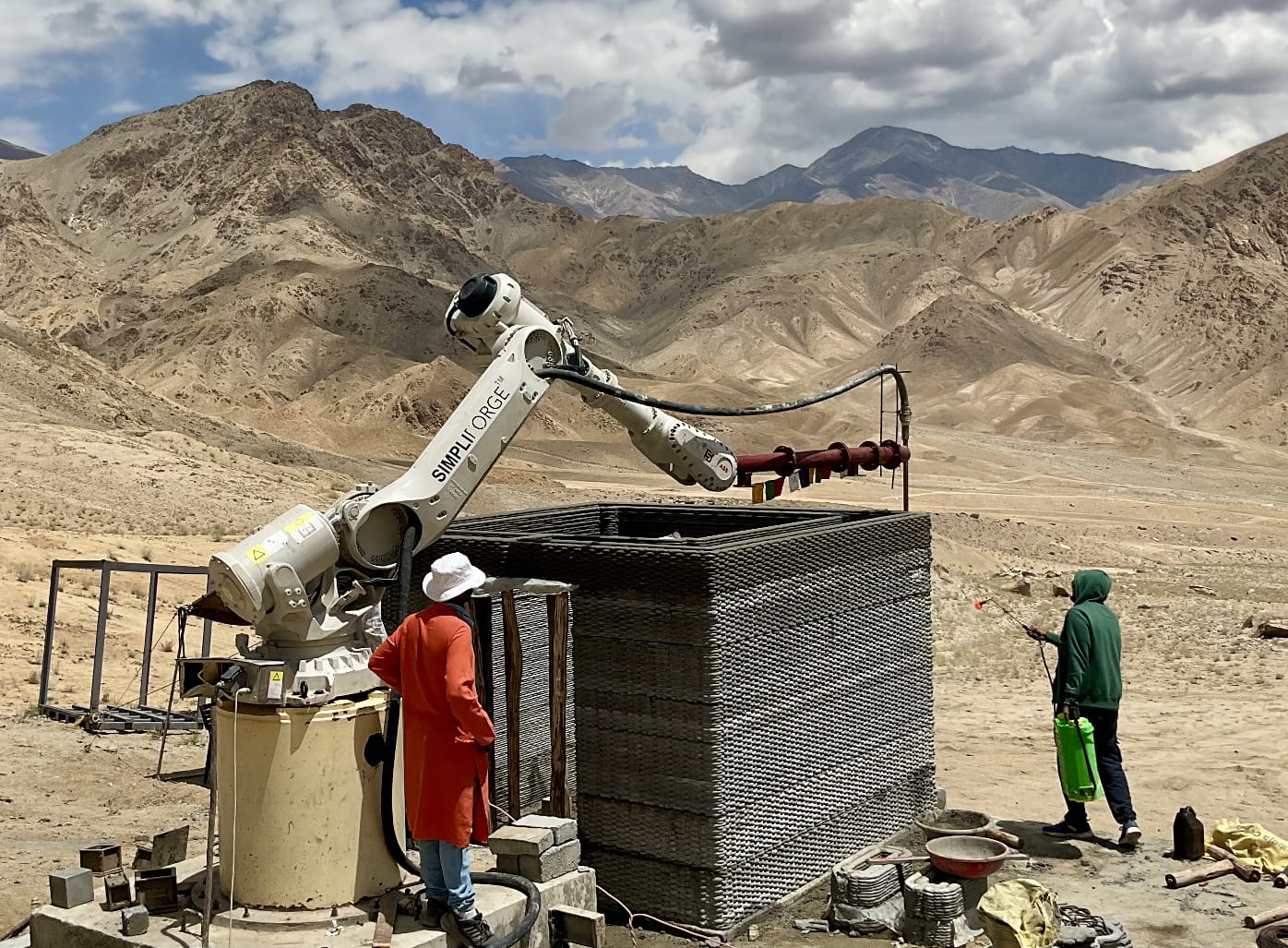Hyderabad: — In a groundbreaking achievement that pushes the boundaries of engineering, construction, and defense technology, Hyderabad-based Simpliforge Creations, in collaboration with IIT Hyderabad and the Indian Army, has delivered the world’s highest on-site 3D printed structure under Project PRABAL—at a staggering altitude of 11,000 feet in Leh, Ladakh.

The project marks the successful installation of a 3D-printed protective military bunker—a global first in additive construction at such extreme high-altitude and low-oxygen (HALO) conditions. The effort sets a new global benchmark for in-situ 3D printing, showcasing India’s emergence as a leader in deeptech and defense infrastructure innovation.
The high-altitude deployment presented immense challenges, including reduced oxygen levels, low humidity, power fluctuation, and extreme UV exposure. Despite these, the structure was completed in just five days, with printing time clocked at 14 hours. The robotic printer system was set up and commissioned within 24 hours, demonstrating exceptional speed, mobility, and operational efficiency.
“This wasn’t just construction—it was extreme engineering,” said Dhruv Gandhi, CEO of Simpliforge Creations. “To print under such challenging environmental conditions and deliver a robust, field-ready structure reaffirms the resilience of Indian innovation.”
The materials for the bunker were specially developed by IIT Hyderabad, under the guidance of Prof. K.V.L. Subramaniam, who explained that the custom concrete mix was optimized for superior mechanical performance and durability under fluctuating thermal conditions and high-altitude stress.
“Understanding the behavior of local aggregates and developing a printable material that could withstand these stresses was key,” he said, adding that extensive lab simulations and rheology studies enabled this real-world success.
Arun Krishnan, a PhD scholar at IIT-H and representative of the Indian Army in the project, shared that Project PRABAL was conceived during his M.Tech days. “While several attempts had failed in the past due to Ladakh’s brutal climate, it was the unmatched synergy between Simpliforge and IIT-H that finally cracked the code.”
This structure adds to Simpliforge’s track record of pioneering achievements in India’s 3D printing space—from the country’s first 3D printed bridge, to the world’s first 3D printed temple, and the first in-situ 3D printed medical facility for the Army using local materials.
Looking ahead, Simpliforge Managing Director Hari Krishna Jeedipalli envisions the technology evolving beyond Earth.
“This is more than construction. It’s a testbed for future extra-terrestrial habitats—on the Moon and Mars. If we can build in Ladakh, we can build in space.”
Project PRABAL stands as a testament to Make in India innovation and the power of academic-industry collaboration, charting a new course for defense logistics, remote construction, and space exploration.

